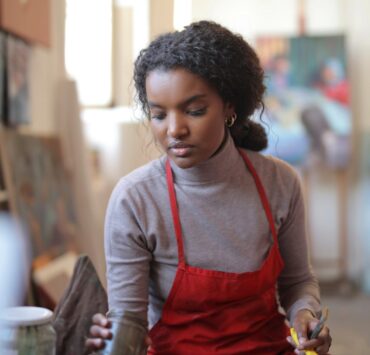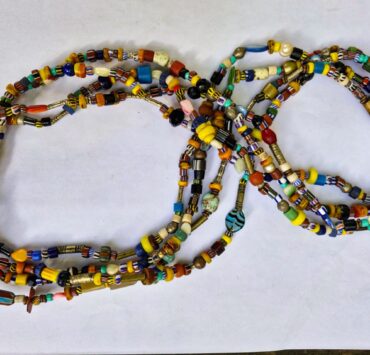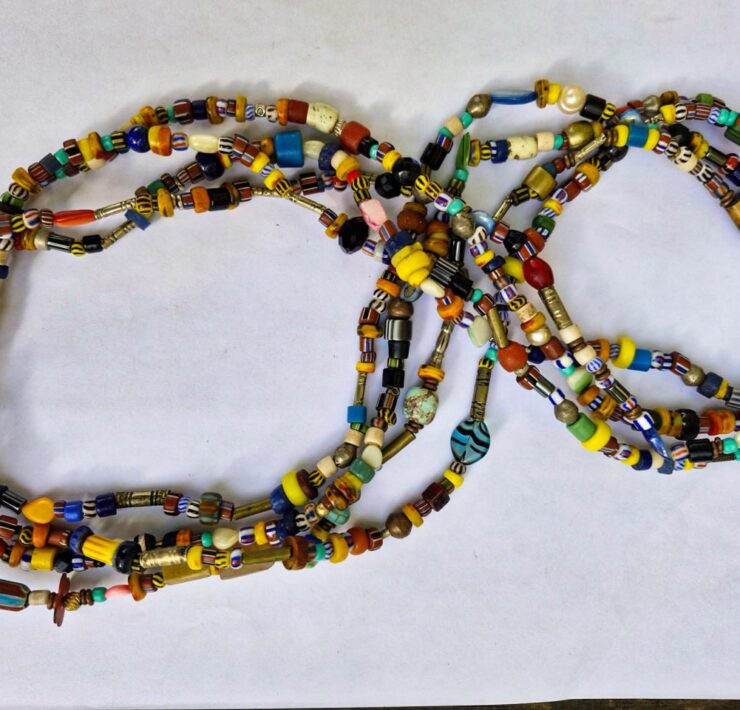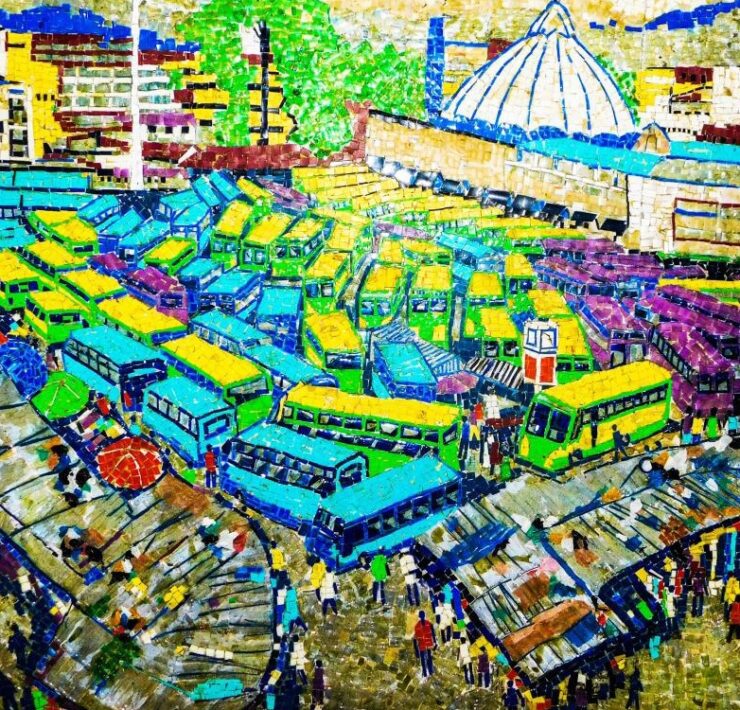Art without a story is dead
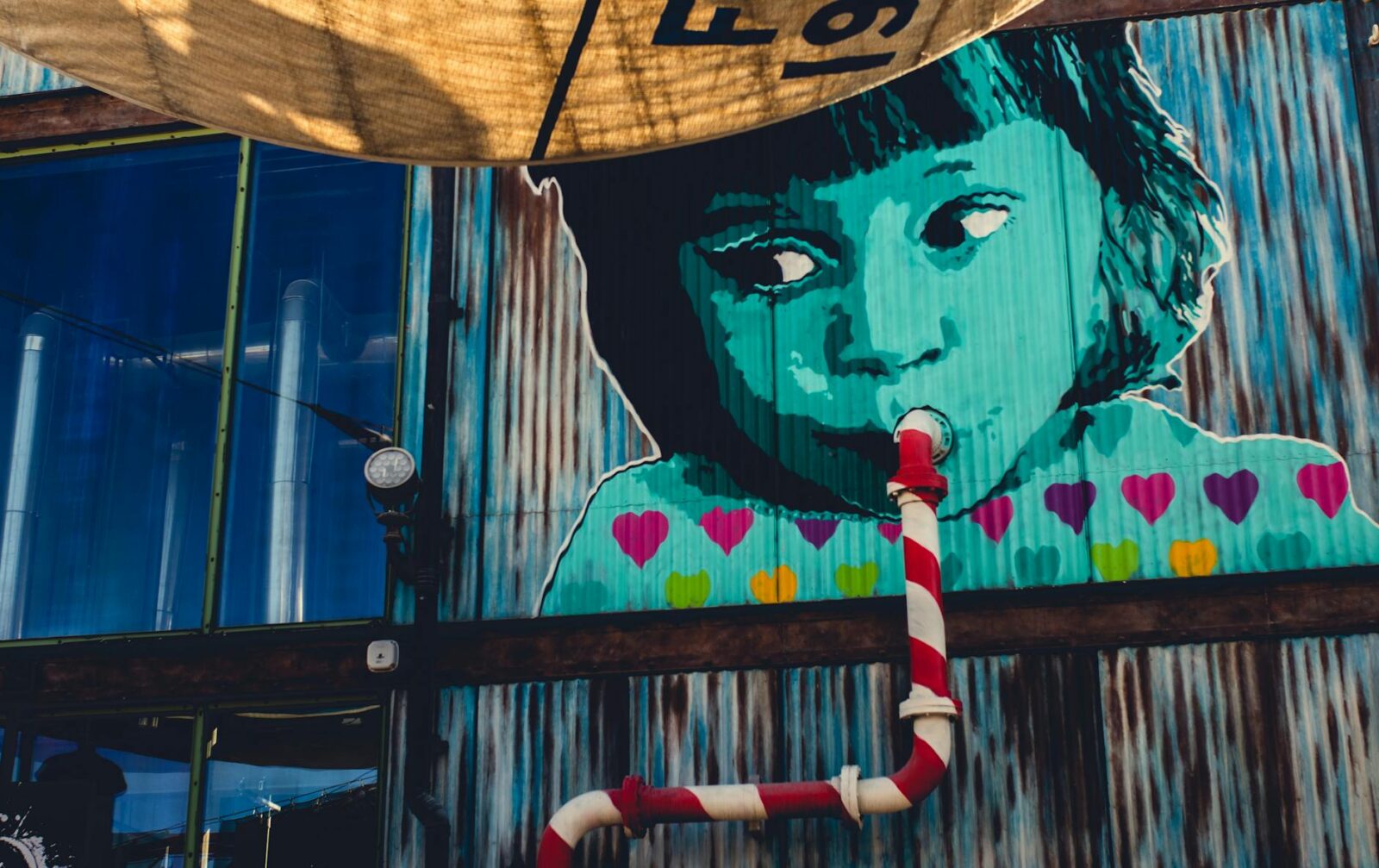
Samuel Phillips is a writer, graphic designer, photographer, songwriter, singer…
Babies will doodle on paper, look at your face, and tell you what they believe their doodle means. It’s up to you to agree on what they call their art or not. They care less.
My two-and-a-half-year-old son doodled on a piece of paper with a pencil he found on my table. He was so focused while doing his thing you would be convinced, he knew exactly what he was doing. When he was done, I asked him what he did. He told me it was a cow.
How does he see a cow in these multiple interconnected lines?
Two days later, I showed him the drawing and asked him the same question and he answered “A cow”.
It was then that I told myself that either the young man knew what he was saying and I was the one blind to his art, or there was a lesson that I needed to learn about art. And for sure, there was a lesson for me to learn.
Beauty, they say, is in the eyes of the beholder. But what about art? Art is in the heart of the storyteller.
That right there is my lesson. Art is in the heart of the storyteller.
Art without a story is dead. Just like faith without works is dead.
The power of stories
For the person who can see, there are stories all around us, but the power of art is the storyteller’s ability to animate what is unseen by others and then give them thoughts and experiences. So when the unlearned see the art, they see paper and paint, or a photograph but when the learned look, they see the thoughts, the animation, the conversation, the experience…they see the mind of the storyteller.
This might sound like a contradiction to the title of this article, but even a grave that contains the dry bones of a dead person is also telling a story. A story that all humans, rich or poor, beautiful or ugly, strong or weak will have to embrace at some point.
It’s a story that begins with “Once upon a time, there lived a man…or a woman…or a…”
Oh, Child!
About five years ago, one of my friends Imor Pesa shared a picture of a painting he created with me. Back then I had a personal stock photography website where I posted my photos and also allowed friends to share their work. I had to close the website after a while due to the cost of maintenance.
Anyway, he shared this image of a young girl with me. The title of the art is “Oh, Child”. I instantly loved the art and asked him who the girl in the painting was. He told me the girl was his young daughter he lost sometime back before we became friends. It was a heartbreaking moment watching him share the sad story of how he lost his daughter.
A while after that, my team and I interviewed him and he shared details of his art journey, and his challenges finding himself as a young person growing up in Kenya. You can read his amazing story HERE.
Now, looking at his artwork, the peace on the face of the young girl, and the dexterity with which Imor narrated his thoughts within the art, you can tell that he has managed to shift the story away from the pain of his loss to that of reminding himself of the beauty of his young daughter. So instead of painting the horror of his loss, he painted his joyful memory of his daughter. I find that very beautiful.
What that tells me is that stories have the power to shift and change perspectives and engineer how we see and accept life.
Human history
Human history is full of stories. In fact, history is the stories, cultures, traditions, challenges, and victories of peoples and communities woven together to form a painting on the canvas of time.
This means that as we all make decisions and choices, as communities and nations make decisions and choices daily, we are not only creating history but we are also painting our stories on the canvas of time. The question is, what would you like your life’s ART to look like when someone looks at it in a hundred years when you are long departed? Something to think about.
Art without a story is dead
The biblical definition of faith is “faith is the substance of things hoped for, the evidence of things not seen”.
But how do you have a piece of evidence for a thing that you have not yet seen or which has not yet happened? The answer lies in another scripture: “Faith comes by hearing and hearing by the word of God”. And what this means is this.
The evidence you have, even though you do not yet see what you hoped for, is the word of God spoken to you. The word spoken to you is the evidence that what you hoped for in faith will come to pass. It means you trust the One who gave the word to bring it to pass.
But there is another aspect of faith that says “Faith without works is dead”.
What does it mean? It means that whatever you have been told which created within you faith and hope, will not come to pass if you do not apply work or works to it. Also, unlike what most people think, faith is not blindness or ignorance of reality but a shift of trajectory due to knowledge.
Back to art.
There are loads of things that come to us from the mind of the Divine that create conversations within our souls. These are faith points that we have received and they are valid and powerful, but until we can express them (work them) into our daily lives, they will be as dead as dry logs in the woods. And same is true with ART.
Inspiration and thoughts do not become art until they are acted upon and given expression on the outside. According to my definition, ART is the Ability to Recreate Thoughts.
Here is a thing I find curious though: there are more people with art galleries in their minds than there are physical art hanging on the walls of homes or public galleries. But why? For whatever reason they may have, they did not give expression on the outside to the art on their inside. Therefore, all that huge collection of art in their minds is worthless…DEAD.
Someone even said that…
…the richest place on earth is the cemetery.
This is something to think about carefully.
Release your art
Art is powerful and deeply communal. It not only expresses the heart of the artist but also the mind of the community and the various experiences that formed the community. It not only tells the story of the present but it is a bridge between the stories of the past and a shaper of the stories of the future.
In the African context, art was used for telling stories, keeping records, storing ancient knowledge, teaching, and transmitting spiritual codes from masters to students and it also represented, symbolically, the various aspects of Divinity.
This means that when African communities ask for the return of the artifacts that were stolen by foreign powers when they colonized Africa, it’s not just the carved head of a man that you see in the British Museum or the bronze sword in the hands of private collectors in the US that they are asking for, it is the African story, the African spirituality, the African knowledge codes and various other systems of knowing which are hidden in that art, that is being asked for.
In conclusion, as you put your pencil to paper, your paint brush on your canvas, or as you compose your shot on your camera, remember two things:
1: Your art is only as alive as your story
2: Even dry bones in a grave are telling a story
Have a beautiful 2025 and beyond.
What's Your Reaction?
Samuel Phillips is a writer, graphic designer, photographer, songwriter, singer and a lover of God. As an Afrikan content creator, he is passionate about creating a better image and positive narrative about Afrika and Afrikans. He is a true Afrikan who believes that the true potential of Afrika and Afrikans can manifest through God and accurate collaborations between Afrikans. Afrika is the land of kings, emperors, original wisdom, ancient civilizations, great men and women and not some road-side-aid-begging poor third world continent that the world finds joy in undermining.









